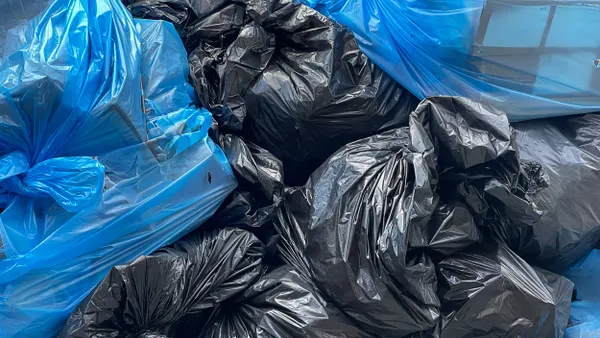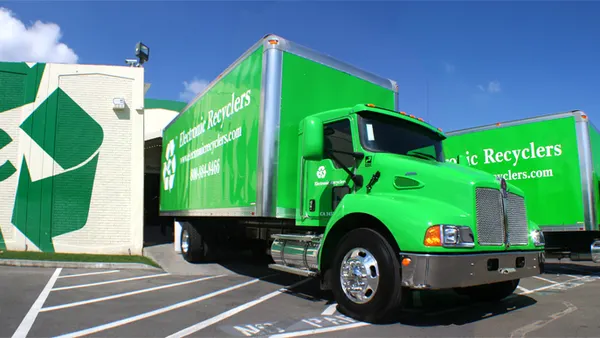Dive Brief:
- The Delaware Solid Waste Authority is cutting back the number of recycling drop-off centers it offers and increasing services at the ones that remain as curbside collection becomes more prevalent. About 364,000 households now have curbside recycling and 25,000 handle their own waste, as reported by Delaware State News.
- Contamination had become an issue in drop-off bins at shopping centers and illegal dumping was an issue at larger sites. The remaining locations are fenced in with attendants on site during operating hours to ensure residents are separating their material properly.
- The centers will accept single-stream recycling, cardboard, household batteries, used oil and oil filters, electronics and polystyrene foam. Regular events will also offer paper shredding and collection for hazardous waste and latex paint.
Dive Insight:
Since Delaware's Universal Recycling Law took effect in 2011 curbside access has become more prevalent, but residents who live on private roads or in rural areas are still responsible for their material. The closure of these centers mean that some may have to contract private haulers or travel farther, but they represent a small percentage of the overall population. The state has also provided more than $8.5 million in grants to local programs since the law was passed to increase recycling options.
Delaware's recycling law has helped the state achieve a 42% diversion rate and put it on track with national trends. Multiple studies have shown that more than 90% of U.S. residents have access to some form of curbside recycling for basic categories such as paper, PET and aluminum cans, with fairly high rates for other types of plastic as well. Research has shown that single-stream is now the most common way of handling this material at facilities in the U.S.
Providing recycling access to the remaining residents in rural areas or multi-unit buildings is still complex due to various logistical factors. Rural routes may not be cost-effective for haulers and storage can be an issue in larger buildings. Encouraging residents to use drop-off centers may not always be easy, but upgrading them to offer more services as has also been seen in other states is a good start.











